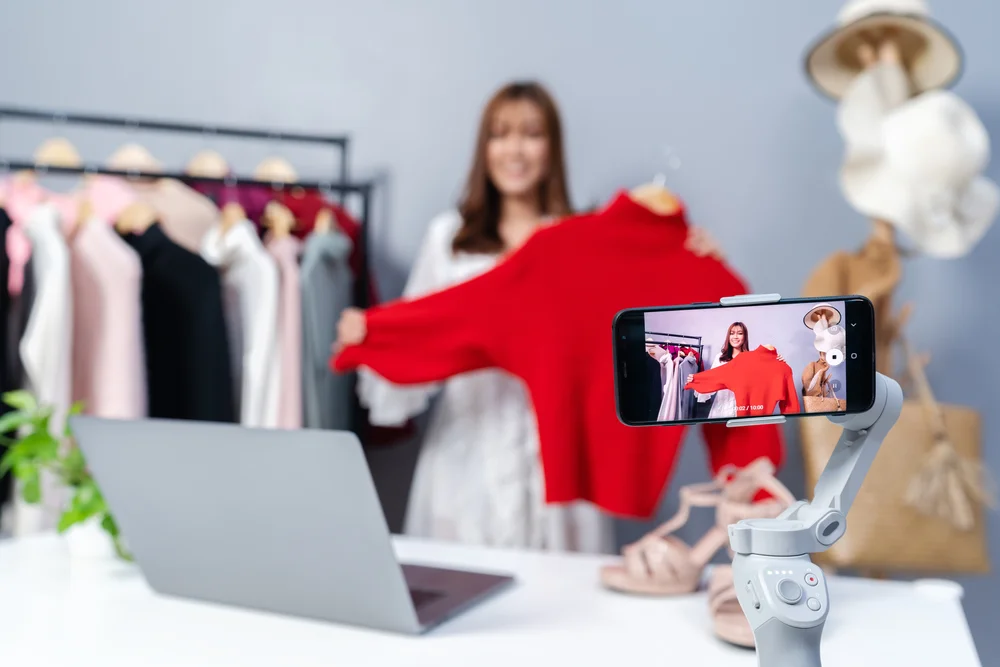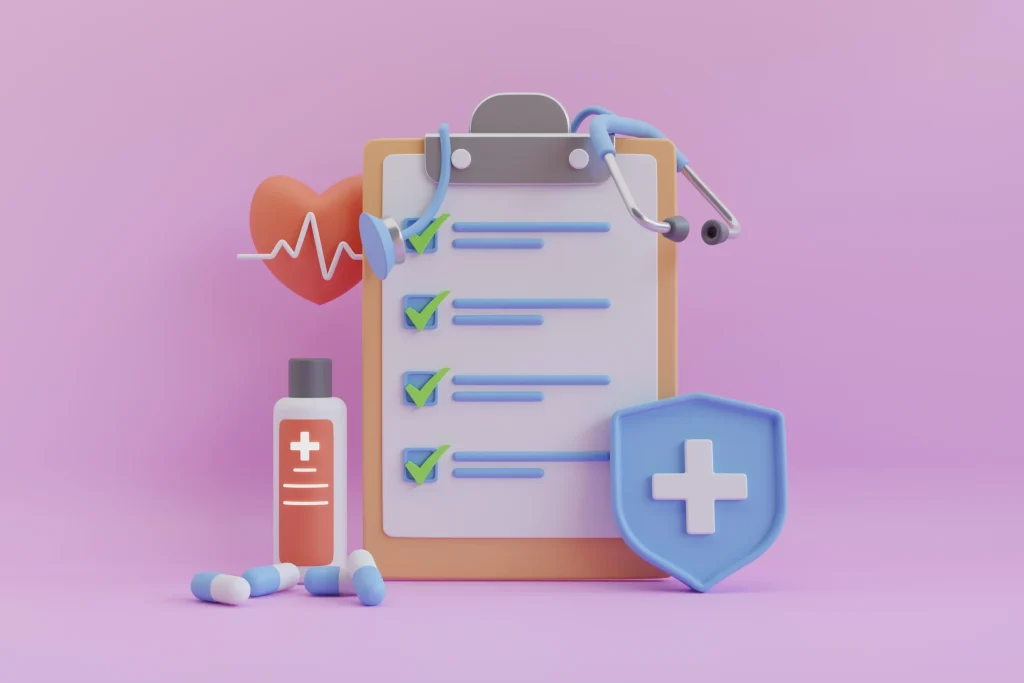Faire la promotion d’un produit suppose de mettre en place une stratégie marketing différente d’une campagne classique de notoriété. La marque va devoir concentrer son contenu sur un article spécifique, pour mettre en avant ses caractéristiques et donner envie de l’acheter.
Mais une campagne pour promouvoir un produit peut servir d’autres objectifs stratégiques. Elle peut être l’occasion de :
- gagner en notoriété,
- recruter de nouveaux leads (en particulier si la marque étend sa gamme de produits),
- fidéliser ses clients existants,
- collecter de l’opt-in,
- ou encore attirer son public en magasin (avec des démonstrations produits par exemple).
Dans cet article, nous vous proposons 6 idées de campagnes marketing gamifiées pour promouvoir un produit.
SOMMAIRE
- 1. Promouvoir un produit en donnant un aperçu exclusif
- 2. Répondre aux questions des clients avec un quiz interactif
- 3. Partager de l’UGC pour faire la promotion d’un produit
- 4. Lancement d’un produit : faire gagner des coupons 100% gagnant
- 5. Présenter les avantages du nouveau produit
- 6. Immerger les clients dans son univers de marque avec une chasse au trésor
1. Promouvoir un produit en donnant un aperçu exclusif
Le lancement d’un nouveau produit est un évènement pour les marques. Certaines en profitent pour organiser un événement durant lequel elles présentent ce nouveau produit. C’est le cas d’Apple et de ses célèbres Keynotes.
Le live shopping offre une alternative digitale à cette présentation de produit, offrant la possibilité de découvrir en exclusivité l’article utilisé (ou porté dans le cas du marketing de la mode). Les marques peuvent aussi en profiter pour répondre aux questions des internautes et présenter les caractéristiques et la valeur ajoutée de leur produit de manière plus interactive et pertinente.
Cette présentation du produit peut se faire en amont du lancement. Dans le cas d’un produit digital (un logiciel ou un jeu vidéo), l’entreprise peut créer une forme de teasing en présentant une démonstration de son service ou en faisant tester un MVP (pour Minimum Viable Product, soit une version bêta) à ses utilisateurs engagés. C’est un moyen de collecter des feedbacks pour améliorer le produit final, mais aussi de récompenser ses clients fidèles.
2. Answering customer questions with an interactive quiz
La principale valeur ajoutée d’un produit, et ce qui lui permettra de se distinguer de ses concurrents, c’est sa capacité à répondre aux problèmes que rencontrent les consommateurs. Pour inciter son audience à s’intéresser à un produit, et lui donner envie de l’acheter, la marque peut présenter ses caractéristiques à travers un Quiz interactif.
Les consommateurs pourront découvrir le produit de manière interactive, à travers un format gamifié à l’issu duquel ils peuvent remporter un bon d’achat ou une remise. C’est ce qu’a fait Savencia pour mettre en avant ses 2 marques Giovanni Ferrari (mozzarella) et Islos (Féta) durant l’été. L’entreprise a partagé un quiz aux couleurs méditerranéennes dans lequel les participants pouvaient tester leurs connaissances tout en découvrant les produits.
Les participants peuvent en profiter pour poser des questions via un formulaire partagé en fin de quiz. L’entreprise peut ensuite garder les questions fréquentes et/ou pertinentes pour organiser un Q&A et ainsi répondre aux préoccupations de ses prospects.
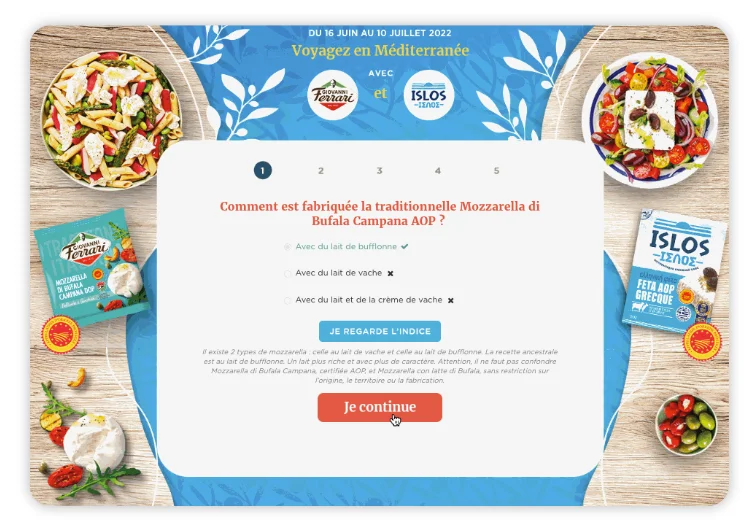
3. Share UGC to promote a product
Quelle meilleure façon de faire la promotion d’un produit que de partager des témoignages de la valeur qu’il offre à vos clients. En marketing, c’est ce que l’on appelle l’UGC, soit le contenu généré par les acheteurs. Il peut s’agir de photos ou de vidéos dans lesquelles vos clients se montrent en train d’utiliser (ou de porter votre produit).
Ce contenu authentique est efficace pour convertir de nouveaux clients, d’autant plus lorsqu’il est repartagé avec un hashtag dédié. Pour collecter de l’UGC, les marques peuvent organiser un concours (là aussi vidéo ou photo). Les clients seront encouragés à participer pour tenter de gagner une dotation attractive et la possibilité d’être repartagé sur le compte de leur marque préférée.
C’est ce que fait GoPro pour mettre en avant la qualité de ses appareils photo et caméras.
4. Product launch: 100% winning coupons
Les entreprises peuvent organiser une campagne promotionnelle pour donner de la visibilité à un nouveau produit et booster les ventes aux lancements. Les instants 100 % gagnants, permettent de distribuer des e-coupons, sont efficaces dans ce cas de figure.
Les participants peuvent remporter une remise (le pourcentage dépend de leur résultat). La marque peut le faire via une mécanique comme le bandit manchot, dont les motifs représenteront son produit, ou opter pour une pinata qui reprendra la forme de l’article.
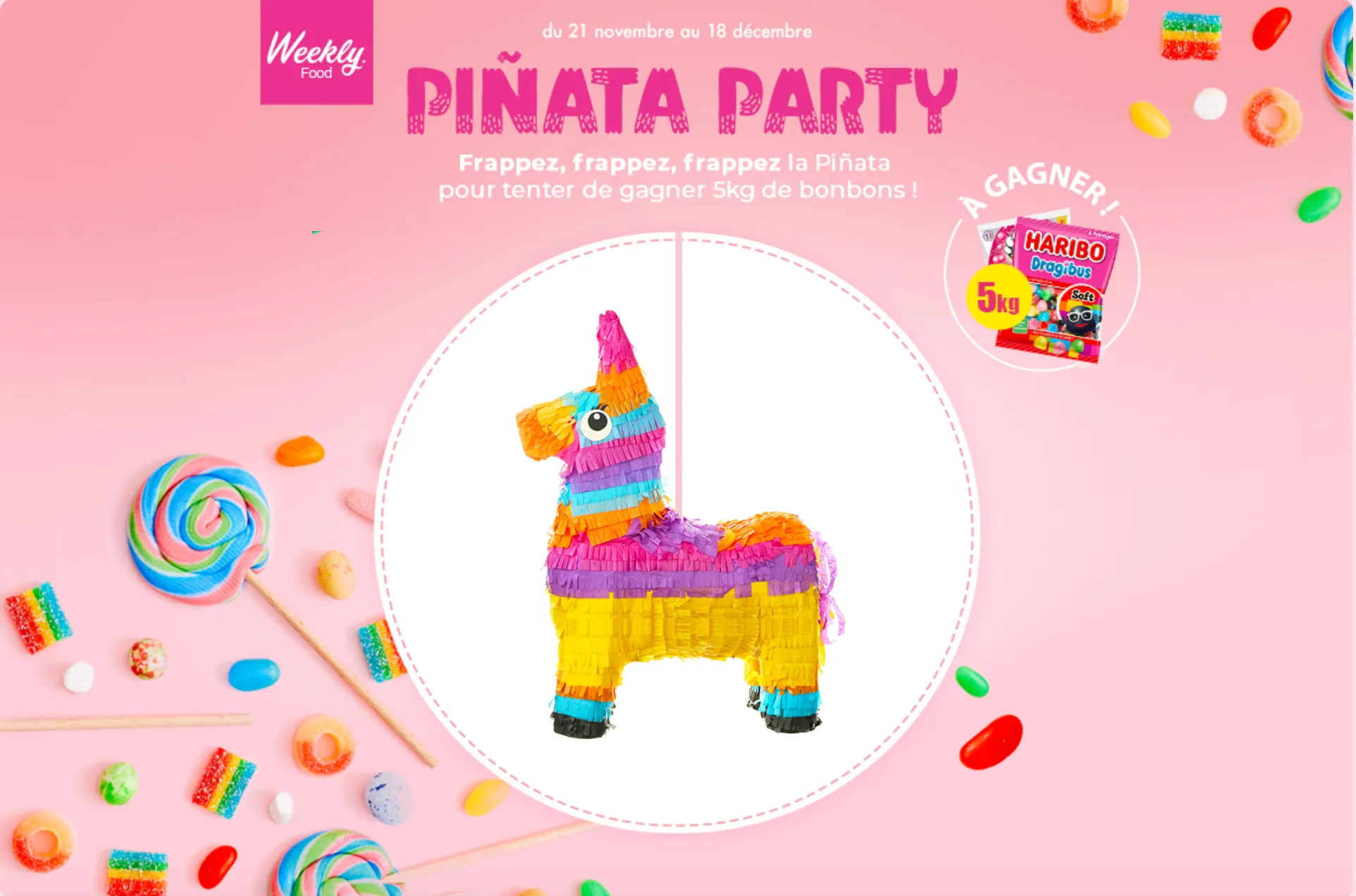
5. Present the benefits of the new product
De nombreuses marques qui font la promotion d’un produit ont tendance à se concentrer sur les caractéristiques et fonctionnalités de ce dernier. Or, une stratégie marketing beaucoup plus efficace est de présenter les avantages qu’offre un article et la valeur ajoutée que peuvent en retirer les utilisateurs. Ces derniers sont ainsi encouragés à se projeter avec le produit entre les mains et visualisent mieux ce que ce dernier peut leur apporter.
Une excellente mécanique de gamification pour présenter la valeur ajoutée de son produit ou de son offre est le Memory. En effet, elle permet de mettre en valeur des contenus promotionnels, d’informer les consommateurs et de maximiser le temps qu’ils passent avec la marque.
Le Shuttle Freight a opté pour ce jeu marketing pour mettre en avant les avantages de leur programme de fidélité et recruter des adhérents. En cliquant sur une carte, les participants pouvaient découvrir les récompenses auxquelles ils auraient accès selon le nombre de points cumulés (cadeau d’anniversaire, traversée gratuite, etc.).
Le jeu était suivi d’un instant gagnant leur permettant de gagner des points de fidélité : une mécanique engageante puisque les prospects savaient ce que ces points leur permettaient de débloquer.
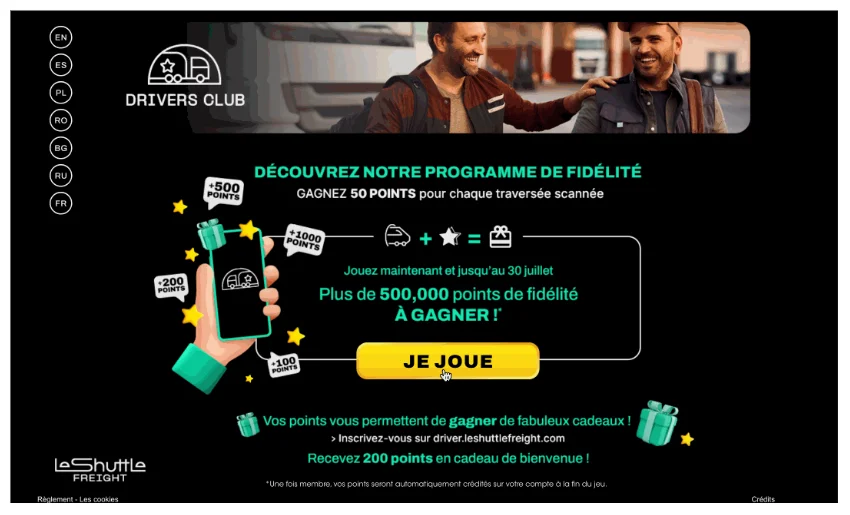
6. Immerse customers in your brand universe with a treasure hunt
Lorsque les marques font la promotion d’un produit, elles utilisent souvent des formats statiques, peu engageants pour les consommateurs. La gamification permet de créer de l’interaction et d’encourager les clients à interagir avec le produit. Ils ne sont plus les spectateurs passifs d’une publicité ou d’une vidéo de présentation didacticielle, mais les acteurs de la campagne, découvrant le produit sous toutes ses coutures et même en action.
La chasse aux trésort est un format permettant de créer cette interaction entre le client et le produit. Les participants sont plongés dans l’univers de la marque et peuvent découvrir le produit dans un environnement gamifié, en lien avec l’article. Il peut s’agir d’un hidden object (ou objet caché) classique, dans lequel l’utilisateur recherche l’objet dans un monde virtuel.
La marque peut opter pour une version complexe où l’utilisateur doit réunir les éléments qui composent le produit (les ingrédients d’un soin de beauté). Le client découvre le potentiel du produit, ses fonctionnalités/propriétés et cas d’usage.
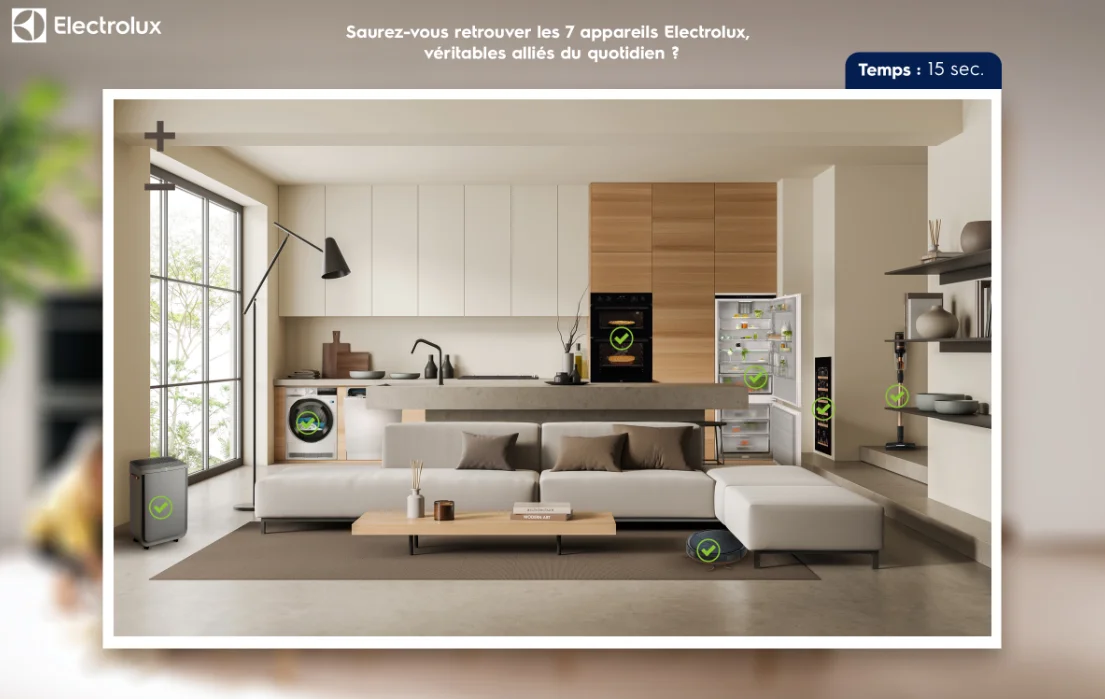
Conclusion
Pour faire la promotion de votre produit, misez sur des formats publicitaires interactifs. La gamification vous permet de créer une expérience grâce à laquelle votre marque pourra booster ses ventes en invitant les clients à découvrir ses produits. Dynamisez vos campagnes marketing en personnalisant nos mécaniques jouables !


